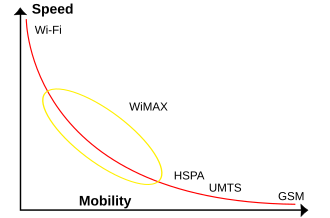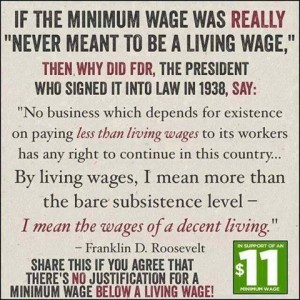WiMax should never have been a mobile technology. Even in current versions.
I remember wanting to put it in my old loft in 2000, and every neighborhood building creating a wireless communications cloud. No need for Fiber or Copper. It was a sad day when Lucent bought out there competitor…. Alcatel they were the first commercial (and even to this day there switch was the only true competitor to Lucent’s 5ESS telephone switch) Those were the days anyone could easily be there own phone company (CLEC if you will). 5E switches were the way to do it. and VOIP like today would have been the way to get it to the consumer correctly. (VOIP/SIP/DSL/PRI/ISDN are last mile–to the consumer options). In 1996 (Or later revision) when congress forced access, they also forced a separation of powers (now combined again) They forced Data to be separate. They should have forced ALL communication to be separate from the hard lines. Think we got here fast? Think about how fast we would have gotten here if Data and Voice were one to begin with, and copper and wireless were the open range .
When I say 5ESS that is a generic Class 5 switch (including Nortel DMS-100 or the lesser used GTE 5 EAX) these are true telco grade switches with 99.999 Quality up-times with redundancy, and high quality & capacity equipment and standards. Standards which offer interoperability between equipment and thus companies across the globe.
Now I get a little technical, and not even talk about the standards or data format carried.
Notice above, I mentioned not an end user setup like ISDN. These Class 5 switches use SS7 communications, and carry more data than even ISDN or SIP (a VOIP standard) The beauty of all three SS7, ISDN, and SIP is that calls can be connected without using the data space of a call. In the first two that is very important because data space was fixed. DS0 (first a hard line, then became a digital line either at full quality that a 56 or 64k — Kilobits), Multiple can be in a DS1 (Typically 23 or 24 channels/lines in a 1.544 Mb DS1, Europe typically uses a 2.048 Mb standard, and thus uses 32 channels two of which are used to control or maintenance)
A little carrier grade info….
These DS1’s can be combined into DS3’s. Rarely DS2’s because T1/DS1 were able to be easily used on copper in typical distances of said copper (up to 6000 feet – Farther with repeaters every mile).
Going to a tangent for the sake of new technology – The 6000 foot T1/DS1 limit is kinda a moot point with newer technologies DSL (DSL=Digital Subscriber Line -ADSL= Asynchronous or unequal bandwidth used for consumer internet/HDSL-High Speed /SDSL-Synchronous, and more) – HDSL & SDSL are typically used for T1/DS1 with HDSL being more common for quality service. It has a distance of 12,000 feet, and with repeaters it can go about 60,000 feet. — DSL services may offer longer distances, but because they are not hardpoint fixed (my term for my other term direct service/connect/brute force connections–Think physical handshake vs imaginary) they have some less reliability. Some of which actually comes from distance. The technology allows more noise thus more allowed distance. In the end, it does not matter, but if you get it make sure to get a SLA (Service level agreement i.e. guaranteed up-time). The SLA is important, because while its a cheaper technology, if you request the cheaper technology, and due to the “imaginary handshake” the Telephone company may also cut corners by not offering the guaranteed up-time. Kinda makes sense, because any cable cut is an issue, and longer distances increase the likelihood of a cable cut, and time to trace said cut.
NOTICE for my tangent, I said moot for 6000 foot limit not the bandwith limit. They did not focus on higher bandwidth. They would just run multiple lines, and jumped to a DS3 for higher bandwith. Higher bandwith on copper was reserved for short distances. While DS3 is native on Copper, once you went to DS3 you generally went with fiber. DS3 typically holds 44-45 Mb or 672 DS0’s/lines
Tangent II — Optical
These DS3’s now just a consumer grade product and were a common speed on one of the first fiber systems OC1 … with SONET based STS1 encoding. (OC1 was about a 50Mb system)
Once into OC – Optical Carrier you have levels OC-1/OC-3/OC-12/OC-48/OC192 being common. These are frequently SONET based for distances in a carrier environment. Gigabit Ethernet over fiber is often similar, but different. Because of its differences, it does have variants that fit within the SONET bandwidth constraints. Higher bandwidth systems are available, but generally for short distances i.e. in-house or in a carrier environment used in transatlantic cables. Many carrier grade systems are often made in rings for reliability. SONET ring technology offers fail-over technology for reversing the direction of data in the ring when one segment is cut or loses connectivity (note the data is bi-directional {i.e. synchronous}. its just redundant).
Because copper and optical fiber are different technologies and have different capacities, the numbering system of DS/T systems and OC systems are not related. The number and type of DS trunks on optical may vary depending on provisioning.
Various methods of encoding DS0 lines are available depending on the quality needed, codec involved, and processing power available. However, the telco standard is 64 bit connections. 56k for older technology, traditional T-1’s, and consumer grade POTs lines (Plain Old Telephone-Analog)
This 56/64bit telco standard is important for interoperability. As we move to digital voice, there is not a single standard for compressed connections, and interconnections typically default to the standard. In house — In this case in carrier or on your own network which can be global — you can carry CD quality (high quality voice) or low quality to save bandwidth i.e. when buying bandwidth between locations either within a city, country or another such as seen in typical outsourced call centers in other countries.
In the years after 2010…. We are starting to see SIP interoperability though some carriers still separate voice from data. This brings us full circle to the topic of WiMAX. First, WiMAX while wireless even in cloud form is not good mobile, but with the right digital voice codec handles both carrier grade and cloud voice. (See below)
WiMAX as defined on Wikipedia only dates back as a standard to 2005, but I’ll have to look back at my marketing materials to see what the previous version was. Either way both are designed mostly as fixed wireless.

WiMax Speed vs Mobility graph comparing Wi-Fi, HSPA, UMTS, GSM http://en.wikipedia.org/wiki/File:Wimax.svg
WiMax in 2000 may have been available in unlicensed radio spectrum… Oh I think I found it…. MMDS (Multichannel Multipoint Distribution Service) sometimes called Wireless Cable.
Notice the Low Mobility level. Its not designed for moving signals, quick reconnects, or low power. This is the reason its not good for mobile uses. Phones with it quickly ran batteries down especially where connectivity to towers changed.
This feeds back into the voice circuit technology. WiMAX is data. It can handle the DS circuits as true DS data circuits carrying voice in the provisioned data circuit or as VOIP via SIP.
in 2000 I was looking to use T-1’s for data and voice input into an Alcatel Class 5 switch (5ESS comparable) To offer true CLEC (Competitive local Carrier quality voice) along with internet to nearby neighborhoods via MMDS (WiMAX of the day). The voice would have been VOIP using SIP. So yea, I would have been like a local version of Vonage, and once on network, those voice end users could have been anywhere like Vonage. Not just in My MMDS neighborhood network.
Thus the cause for me to write my rant…. someone complaining about 3g cellular speed, and how slow it was in there neighborhood compared to 4g, and the link someone posted showing what 4g vs 3g is. . . http://www.engadget.com/2011/01/17/2g-3g-4g-and-everything-in-between-an-engadget-wireless-prim/
Followed by my own crazy thoughts that the CDMA carriers long ago should have gone to data voice over wireless in an always on data situation vs circuit switched data which uses the voice line. Granted all CDMA & other 2g technologies was digital. It just dedicated the line to voice or data not VOIP (or Voice over Data of any form) with priority over non-voice data.
There is no reason Sprint should not have gone with VOIP for voice. Whether it be CDMA2000, WCDMA, or WiMax, it should have been done. Yes there current CDMA network can do it. I am not sure what codec they are using for voice, but at one point they were using Qualcom’s PureVoice, Qualcom also developed CDMA. PureVoice is compatible with VOIP (inside a network or if both ends use it) Thus is can be used within sprints network. Or they can use another standard Codec.
This had put them way behind the other wireless carriers that use GSM standards. GSM added simultaneous voice and data years ago. Though as Sprint moves to LTE the standard many carriers are going to, we will see the ability to use simultaneous Voice & Data. NOTE: While I dog Sprint, I think they are great and have had them continuously for over a decade. I have worked with 4 other carriers ATT (and there variants), T-Mobile, Verizon (quality and good service, but you pay for it), and some smaller ones most have been wrapped into other carriers. I still prefer Sprint except for the no simultanius data & voice


